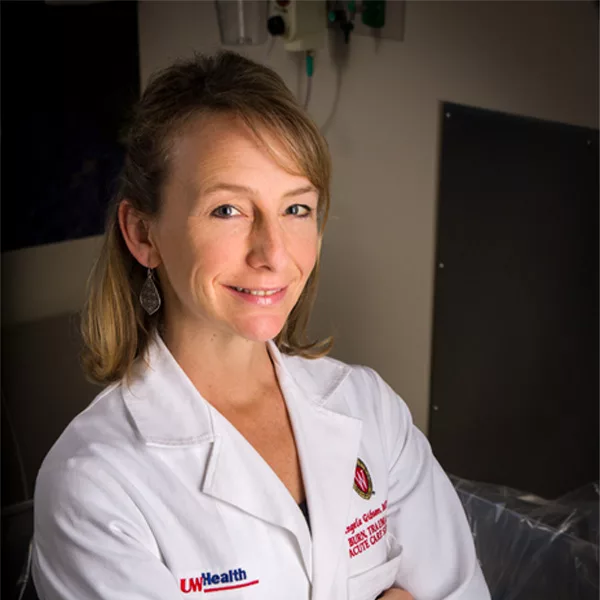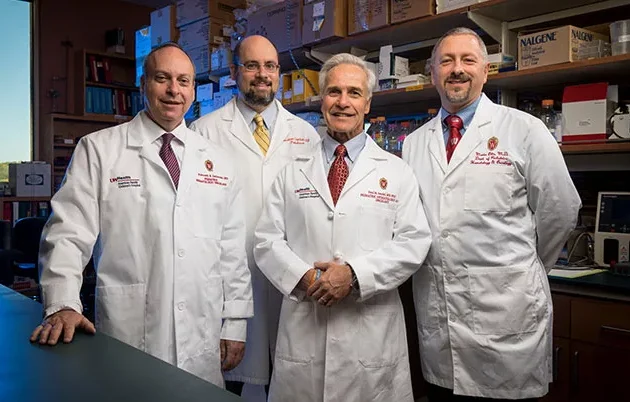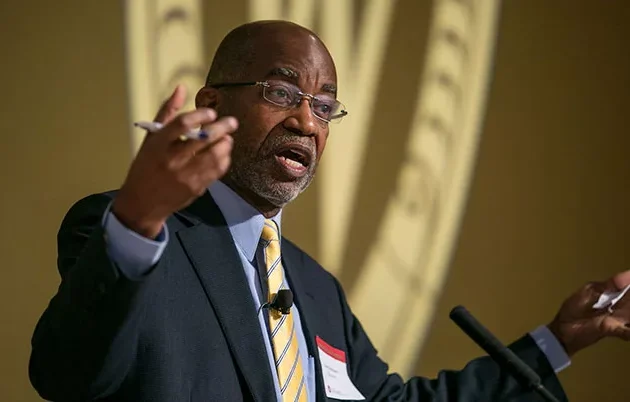How did your observations inspire you to become a surgeon?
Dr. Richard Helgerson — the main burn surgeon here at the time — was a master. I watched him inspect patients and figure out how he could find enough skin to cover their massive wounds. His amazing insight in treating burn victims played a huge role in my decision to become a burn surgeon.
Do you think about how this started?
I can’t believe that I am where I am. I can’t thank the people here enough, especially in the Department of Surgery. They knew I wanted to work as a UW Health surgeon, and everyone here supported me. I also couldn’t have made it through all my training without the support of my husband and family, who took care of everything else while I pursued my dream.
Did you have other advocates?
I had many. Dr. Deane Mosher, the director of the MSTP then, was the first to tell me he knew I could do it. Also, Dr. Mike Schurr, a burn and trauma surgeon, encouraged me.
How does your early experience as a nurse help you as a surgeon?
It’s been incredible to work at the different levels because I understand where everybody is coming from. I empathize with the challenges of caring for burn patients, and I truly appreciate the team effort. I am lucky to work closely with Cindy Schmitz, who was my nurse manager when I started as a nurse.
What is your main research focus?
I’m looking at optimizing how we care for burns so they can heal without skin grafts. I’m finding there is a lot more healthy tissue than our eyes can see. I think we can better identify healthy versus dead tissue and develop new therapeutics rather than create more wounds on patients’ bodies to harvest skin for grafts. I hope my research will one day allow patients to heal with less pain.
What’s it like being a researcher?
I love having the ability to look at a patient’s problem and think about it from a research standpoint then bring those ideas into the clinical realm, where they can help my patients. It’s the best of both worlds.


